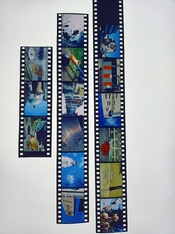I would share some test for get slides from Phoenix 200.
The speed is quite low, at 16 ISO there is the best balance between highlight and shadows. Color balance is quite good and color fidelity is like the Phoenix in C-41, brilliant reds and blues but yellow, orange and caucasian skin tones are lacking hue and saturation. Looking at the grayscale of the color-checker there is just a bit of cross-color with warm highlight and cold/greenish shadows.
This was the Process I used:
First developer Kodak HC-110 (old formula "Original Syrup") 1+19 for 6'30" @ 38°C
4 water rinses of 30" each
Inversion exposing the reel at a 400w halogen lamps for a total of 4', flipping upside down the reel after 2'
Color developer of Bellini C-41 kit for 3' @ 38°C
4 water rinses of 30" each
ECN-2 ferrycianide bleach (SR-29) for 5' @ 38°C
4 water rinses of 30" each
Rollei RXN neutral fixer 1+4 for 5' @ 38°C
wash
C-41 stabilizer
These are scans of the transparencies:
View attachment 394367
View attachment 394368
View attachment 394369
View attachment 394370
View attachment 394371
View attachment 394372
View attachment 394373
View attachment 394374
View attachment 394375











